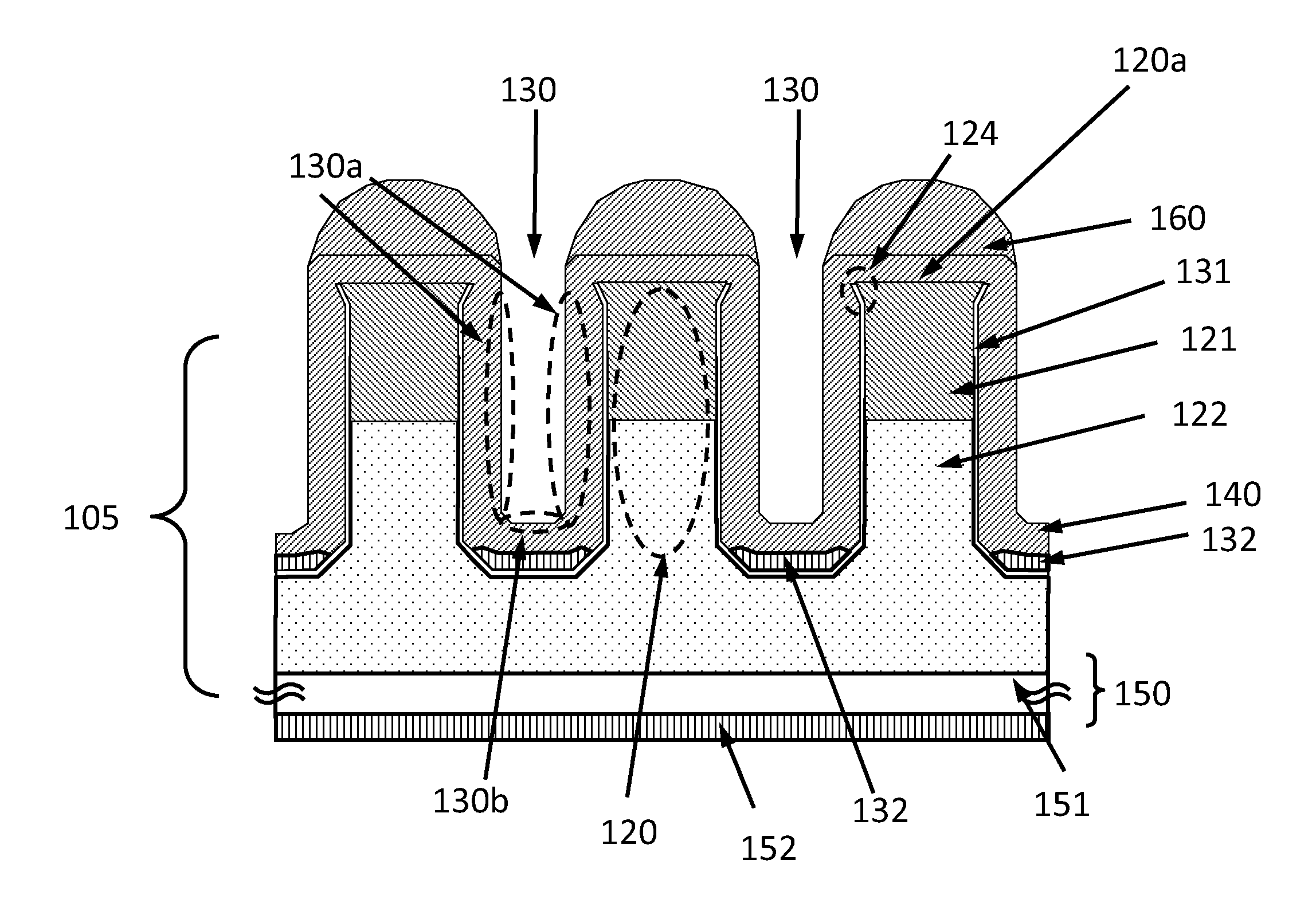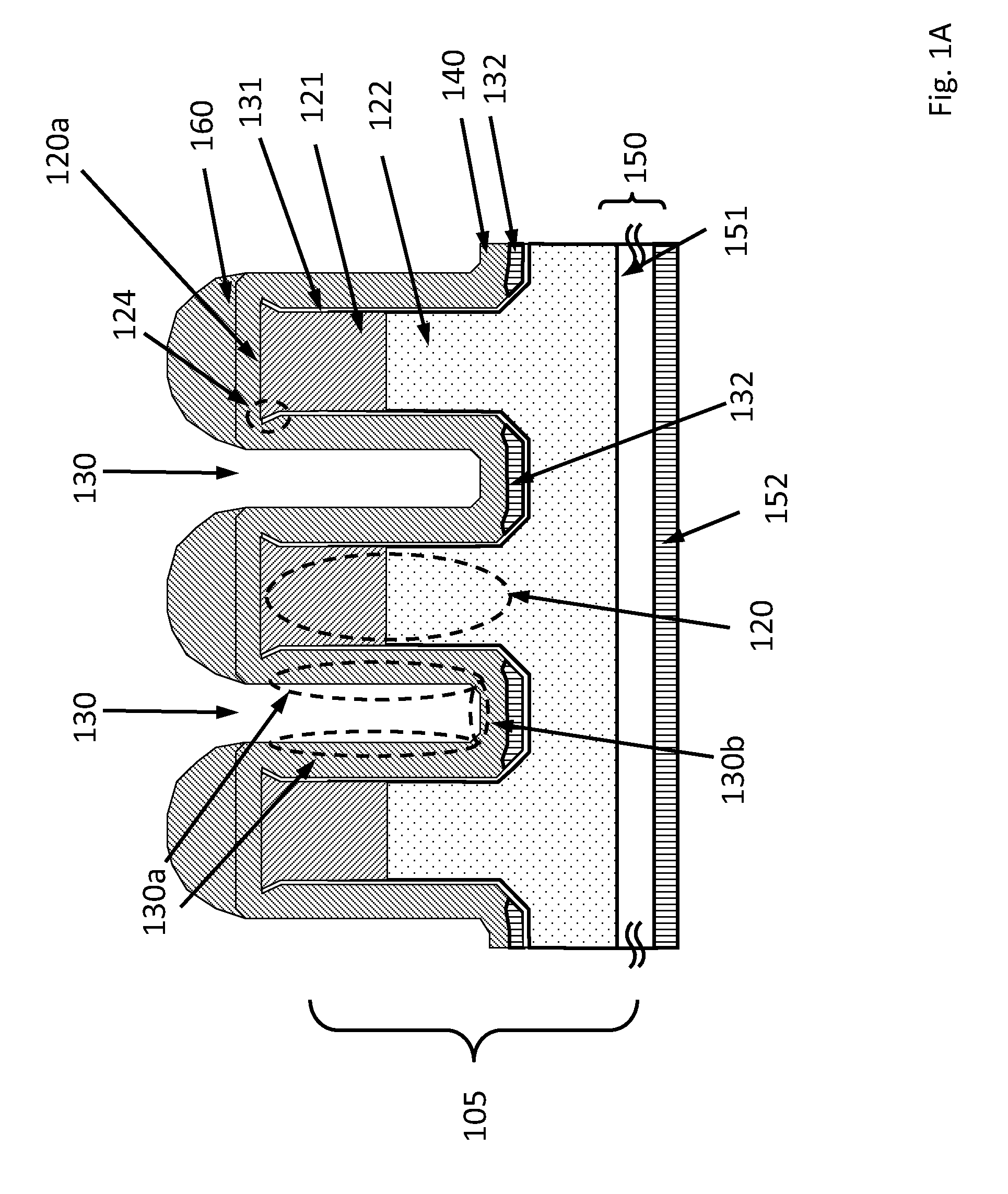Vertical pillar structured photovoltaic devices with mirrors and optical claddings
a photovoltaic device and vertical pillar technology, applied in the manufacture of final products, discharge tubes/lamp details, instruments, etc., can solve the problems of not having a drawback for photovoltaic devices, unable to contribute to electricity generation,
- Summary
- Abstract
- Description
- Claims
- Application Information
AI Technical Summary
Benefits of technology
Problems solved by technology
Method used
Image
Examples
examples
[0054]FIG. 1A shows a schematic cross-section of a photovoltaic device 100, according to an embodiment. The photovoltaic device 100 comprises a substrate 105, a plurality of structures 120 essentially perpendicular to the substrate 105 and one or more recesses 130 between the structures 120. Each recess 130 has a sidewall 130a and a bottom wall 130b. The sidewall 130a and the bottom wall 130b both have a passivation layer 131. A top surface 120a of the structures 120 is free of the passivation layer 131. The bottom wall 130b has a planar reflective layer 132 disposed on the passivation layer 131. The sidewall 130a does not have any planar reflective layer. Each structure 120 has a top portion 121 and a bottom portion 122, the top portion 121 and the bottom portion 122 having dissimilar conduction types. The term “dissimilar conduction types” as used herein means that the top portion 121 and the bottom portion 122 cannot be both p type, or both n type. The structures 120 can have one...
PUM
 Login to View More
Login to View More Abstract
Description
Claims
Application Information
 Login to View More
Login to View More - R&D
- Intellectual Property
- Life Sciences
- Materials
- Tech Scout
- Unparalleled Data Quality
- Higher Quality Content
- 60% Fewer Hallucinations
Browse by: Latest US Patents, China's latest patents, Technical Efficacy Thesaurus, Application Domain, Technology Topic, Popular Technical Reports.
© 2025 PatSnap. All rights reserved.Legal|Privacy policy|Modern Slavery Act Transparency Statement|Sitemap|About US| Contact US: help@patsnap.com



